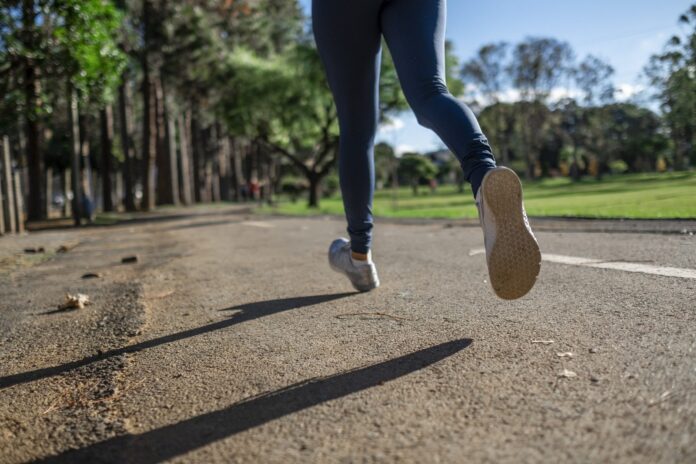For those who are already active, trying to “step it up” and setting a resolution to run a 5K three days a week seemed like a great idea on January 1, but it’s been a month with only 15 total miles to show for it, and that resolution may not be looking so good.
“Resolutions, as we think of them today, are designed to fail,” said Samantha Harden, an associate professor in the Department of Human Nutrition, Foods, and Exercise in the College of Agriculture and Life Sciences. “They promote extreme change all at once versus lasting, meaningful adjustments. Burnout usually hits a month later in February. They also further endorse that where you are, who you are, and what you’re doing is insufficient. We need a mindset shift.”
A way to avoid the inevitable exercise burnout is to create goals instead, Harden said. “It’s important to self-reflect and be honest with yourself about what goals are realistic to achieve.”
By creating specific, measurable, attainable, realistic, and time-based, or SMART, goals, steps can be taken in safe, incremental, and sustainable amounts.
“You need to take into account how active you’ve been when setting these goals,” said Harden, also a Virginia Cooperative Extension specialist and affiliated faculty of the Fralin Life Sciences Institute and the Center for Health Behaviors Research. “If you want 150 minutes of moderate-intensity exercise a week, but through your reflection you find that you’re at 30 minutes, jumping up that high is daunting. A goal to increase to 40 minutes a week for a month with another check-in at that time is both attainable and realistic.”
One of the biggest changes from the 2008 to 2018 Physical Activity Guidelines for Americans is that all movement counts—it doesn’t need to be in a 10-minute bout.
“We now know that being more active in any dose during the day is better than spending all day sedentary or even being sedentary and then going to the gym for an hour. Extra movements go a long way,” Harden said.
To help achieve exercise goals, it’s important to set yourself up for success and there are some evidence-based ways to do that:
· Have fun! For an activity to be a priority, it needs to be fun, such as going for a walk, a hike, or joining a soccer or softball team.
· Have social support or exercise in a group setting. This doesn’t mean that you have to exercise with someone – it could be as simple as checking in via a text or phone call.
· Change the environment or surroundings to nudge behaviors. This might be something as simple as laying your yoga mat out (avoiding having to roll and unroll) or placing your sneakers by the door.
· Small amounts of activity count. Park the car a bit farther away, take the stairs, take a brief walk during work, or try a standing desk.
“We’ve heard these last two points over and over, and they’re not going away because they work,” Harden said.
New Year’s goals aren’t just for those starting, either.
For cardio experts or bodybuilders who throw dumbbells around, changing the routine is important for the body and overall physical health.
“If you just do cardio, add in some strength training,” Harden says. “And if you pump iron, get your heart rate up a bit with some cardio. Our bodies and minds need variety otherwise they get complacent. If we do the same thing over and over, our body doesn’t get the maximum benefit.”
For people of all levels of fitness, it’s important to listen to your body to help prevent injury.


